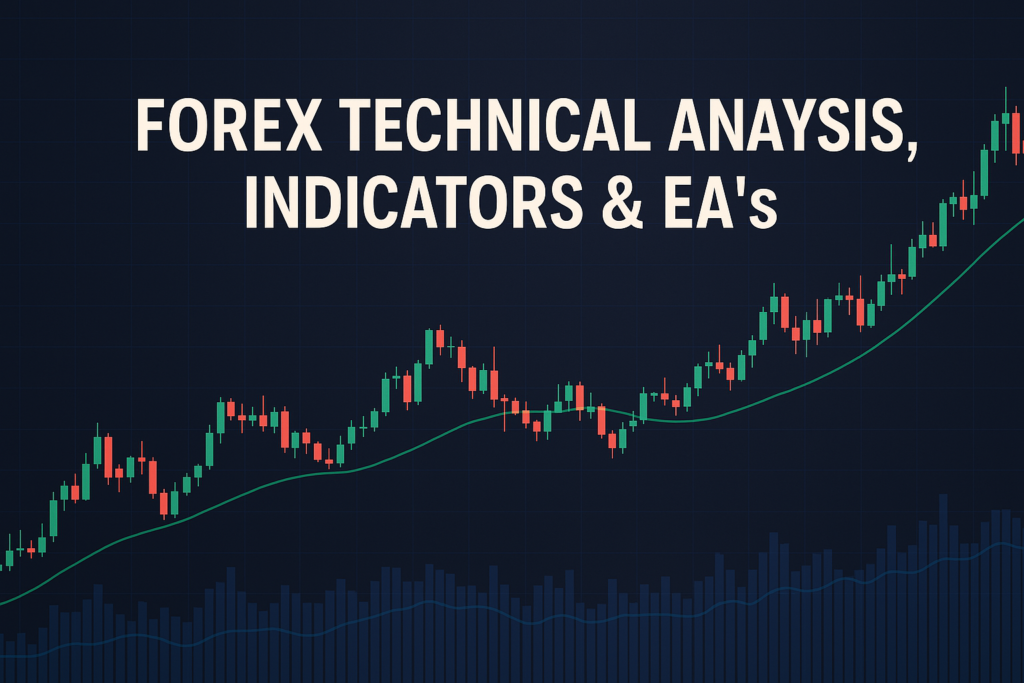
Moving average option trading simplifies Forex trading by smoothing price trends and helping traders make informed decisions.
Moving average option trading is a technique that helps traders understand price trends in Forex. It simplifies the data, making it easier to see whether a currency pair is moving up or down. With moving averages, traders can make informed decisions based on the price’s past actions.
However, many traders, whether beginners or professionals, find moving average option trading challenging. They might not fully grasp how it works or how to use it effectively. This confusion can lead to missed opportunities or costly mistakes. Understanding moving averages is crucial for anyone looking to enhance their trading strategies and achieve better results.
This article will guide you through the basics of moving average option trading, its history, advantages and disadvantages, and how to apply it effectively in your trading journey.
For traders using forex.com tax documents, it’s important to stay informed about the necessary paperwork to ensure compliance and avoid any issues.
What is a Moving Average Option Trading?
What is a Moving Average Option Trading?
Moving average option trading is a method used by traders to analyze price movements in Forex. Think of it like a smooth line that represents the average price of a currency pair over a specific period. For example, if you look at the last ten days of prices, you can find the average. This line helps you see the overall direction of the market more clearly.
Types of Moving Average Option Trading
There are different types of moving averages, each with its strengths. Here are a few:
- Simple Moving Average (SMA): This is the most basic type. It adds up prices over a certain number of days and divides by that number.
- Exponential Moving Average (EMA): This type gives more weight to recent prices, making it respond faster to price changes.
- Weighted Moving Average (WMA): Similar to EMA, but it considers different weights for different prices, usually giving more focus to the most recent ones.
How Moving Average Option Trading Smooths Out Price Action
When you plot a moving average on a chart, it smooths out the price action. This means that if prices are jumping up and down, the moving average will show a more stable line. This helps traders avoid making decisions based on short-term fluctuations and see the bigger picture.
Common Periods Used and Why
Traders often use moving averages for specific time frames, like 10, 20, 50, and 200 days. Shorter periods react quickly to price changes, while longer ones give a more stable view. For example, a 50-day moving average can help you see whether the price is generally rising or falling over a longer time.
The History of Moving Average Option Trading: How It Became Popular
Origin of Moving Average Option Trading
The concept of moving averages dates back many years. They were created to help traders analyze price trends more effectively. Originally used in stock trading, they quickly found their way into Forex as traders sought better tools for decision-making.
When Did Traders Start Using It Widely?
Real-Life Stories
There are many success stories of traders who used moving averages to make significant profits. One trader noted that by following a simple moving average strategy, they were able to turn a small investment into a profitable portfolio. This shows how powerful the moving average option trading can be when applied correctly.
Advantages and Disadvantages of Moving Average Option Trading
Advantages:
Using moving average option trading has several benefits:
- Helps Identify Trends Easily: Moving averages can quickly show you if a currency is trending upwards or downwards.
- Useful for Dynamic Support and Resistance: They act as support and resistance levels, helping you decide when to enter or exit trades.
- Works Well for Crossover Strategies: Moving averages can signal buy or sell opportunities when short-term averages cross longer ones.
Disadvantages:
However, there are also some downsides:
- lags behind Price Movements: Moving averages do not react instantly to price changes, which can lead to missed opportunities.
- Can Give False Signals in Sideways Markets: In a sideways market, moving averages might provide misleading signals, causing you to make poor decisions.
How to Apply Moving Average Option Trading on MT4 & MT5
Step-by-Step Guide to Adding Moving Average Option Trading on Charts
To begin using moving average option trading, you first need to add it to your charts on MT4 or MT5. Go to the “Insert” menu, select “Indicators,” then choose “Trend” and subsequently “Moving Average.”
Customizing Moving Average Option Trading Settings
Once added, you can customize your moving average settings. Adjust the periods, colors, and types according to your trading strategy. A 50-day SMA might be green, while a 200-day EMA could be red.
Saving Templates for Easy Application
After customizing, save your settings as a template. This way, you can easily apply the same moving average option trading setup to other charts in the future.
5 to 7 Trading Strategies Using Only Moving Average Option Trading
All Time Frame Strategy (M5 to D1)
This strategy works across various time frames. You can use a short period moving average, like a 10-day, to find entry points. For example, if the 10-day SMA crosses above the 50-day SMA, it signals a buy.
Trending Strategies
In trending markets, use a longer moving average, like the 200-day SMA, to identify the trend. If prices are above this line, look for buying opportunities. If below, consider selling.
Counter Trade Strategies
Counter trading can be risky but rewarding. If a short-term moving average crosses below a long-term one, it might indicate a reversal. This could be your cue to sell.
Swing Trades Strategies
For swing trading, look for price swings around moving averages. If the price bounces off a 50-day SMA, it could be an opportunity to buy.
5 to 7 Trading Strategies Combining Moving Average Option Trading with Other Indicators
All Time Frame Strategy (M5 to D1)
This strategy combines moving averages with RSI for confirmation. If the 10-day SMA crosses above the 50-day SMA and RSI is below 30, it’s a strong buy signal.
Trending Strategies
Pair moving averages with MACD. If the MACD line crosses above the signal line while prices are above the 200-day SMA, it’s a great time to buy.
Counter Trade Strategies
Use moving averages with Bollinger Bands. If the price hits the lower band and the short-term moving average crosses below the long-term one, consider a buy.
Swing Trades Strategies
Combine moving averages with Stochastic Oscillator. If the price bounces off a moving average and the Stochastic is below 20, it’s a good buy opportunity.
For traders interested in using thinkorswim adx, this tool can help provide additional insights into price movements.
Top 10 FAQs About Moving Average Option Trading
- What is a moving average? A moving average smooths out price data to help identify trends over time.
- Why use moving averages in trading? They simplify price action and help traders make informed decisions.
- What is the best type of moving average? It depends on your strategy, but many traders prefer the EMA for its responsiveness.
- How do I choose the right period for moving averages? Shorter periods are for quick trades, while longer ones are for more stable trends.
- Can moving averages predict market reversals? They can indicate potential reversals, but always confirm with other indicators.
- Should I use one or multiple moving averages? Using multiple moving averages can provide better signals and insights.
- How do I avoid false signals? Combine moving averages with other indicators for stronger confirmation.
- What is a crossover strategy? A crossover strategy involves buying or selling based on the interaction of different moving averages.
- Do moving averages work in sideways markets? They can produce false signals in sideways markets; use caution.
- How do I practice moving average option trading? Start with a demo account to test strategies before risking real money.
Conclusion
Moving average option trading is a powerful tool in Forex trading. Understanding its types, advantages, and strategies can help you make better trading decisions. Remember, practice makes perfect, so try different strategies in a demo account before applying them to real money trading.
With the right knowledge and practice, moving average option trading can guide you to success in Forex. Don’t hesitate to test various approaches and find what works best for you!
For a more comprehensive breakdown, see what experts at [Source] say Trading Point (XM), IG Group
Expand Your Knowledge
- 📌 Forex Trading Learning Road Map
- 📌 Forex Trading Course with no Fees
- 📌 Forex Trading Issues, Problems, and Solutions
- 📌 Forex Daily Forecast & Live Updates
- 📌 Forex Fundamental & News Analysis: Tomorrow’s Market Movers & Trade Opportunities
- 📌 Forex Education Hub: Learn & Profit
- 📌 Forex Technical Analysis, Indicators & EA’s
Start Trading Today
Ready to take your forex trading to the next level? Open an account with Exness, one of the most trusted platforms in the industry. 👉 Sign Up Now and trade with confidence!
My recommended broker stands out with ultra-low spreads for beginners, instant withdrawals, and zero spread accounts for pro traders.
Trusted since 2008, lightning-fast execution, no hidden fees, and a secure, transparent trading environment—giving you the edge you need to succeed. 🚀
YouTube Video Library: Related Videos
Note: The video above is embedded from YouTube and is the property of its original creator. We do not own or take responsibility for the content or opinions expressed in the video.



